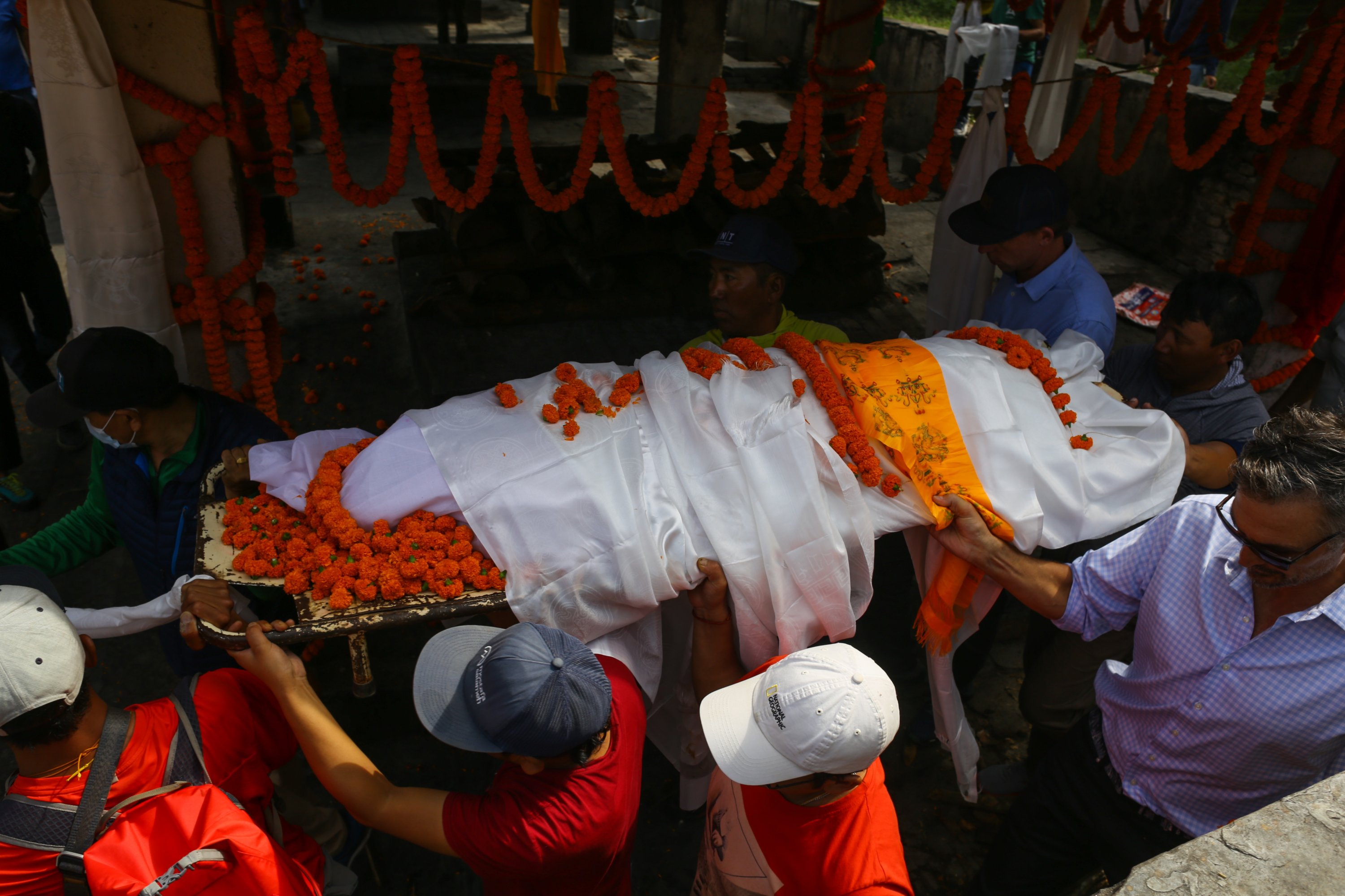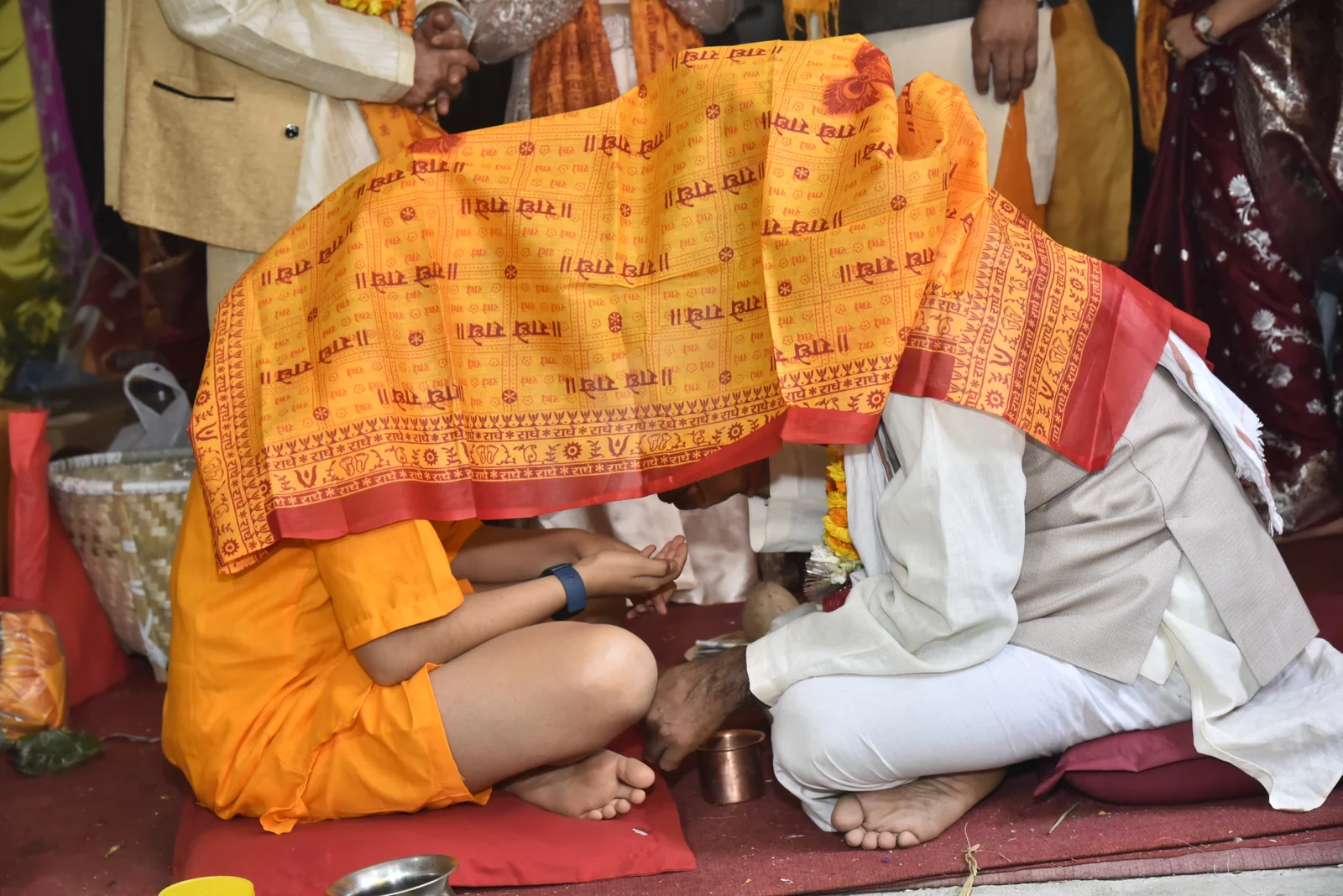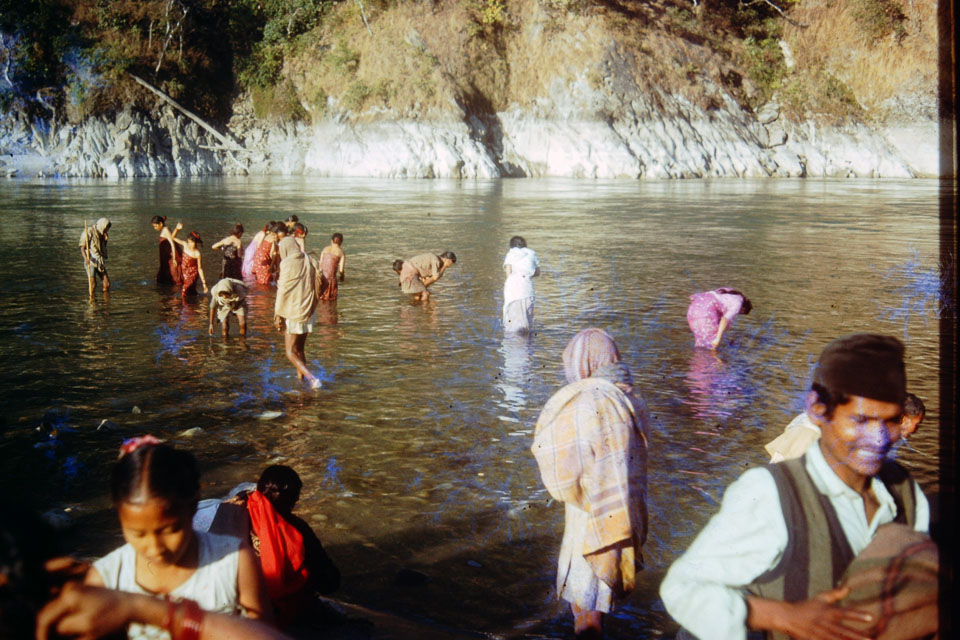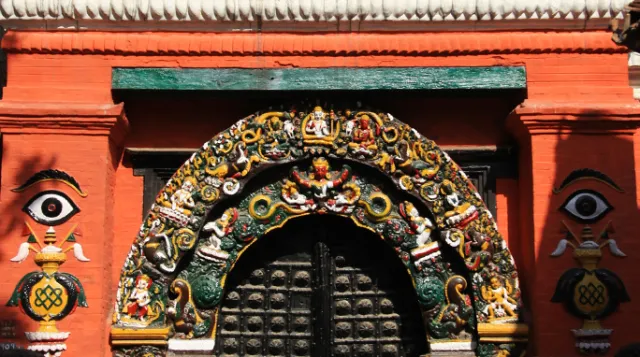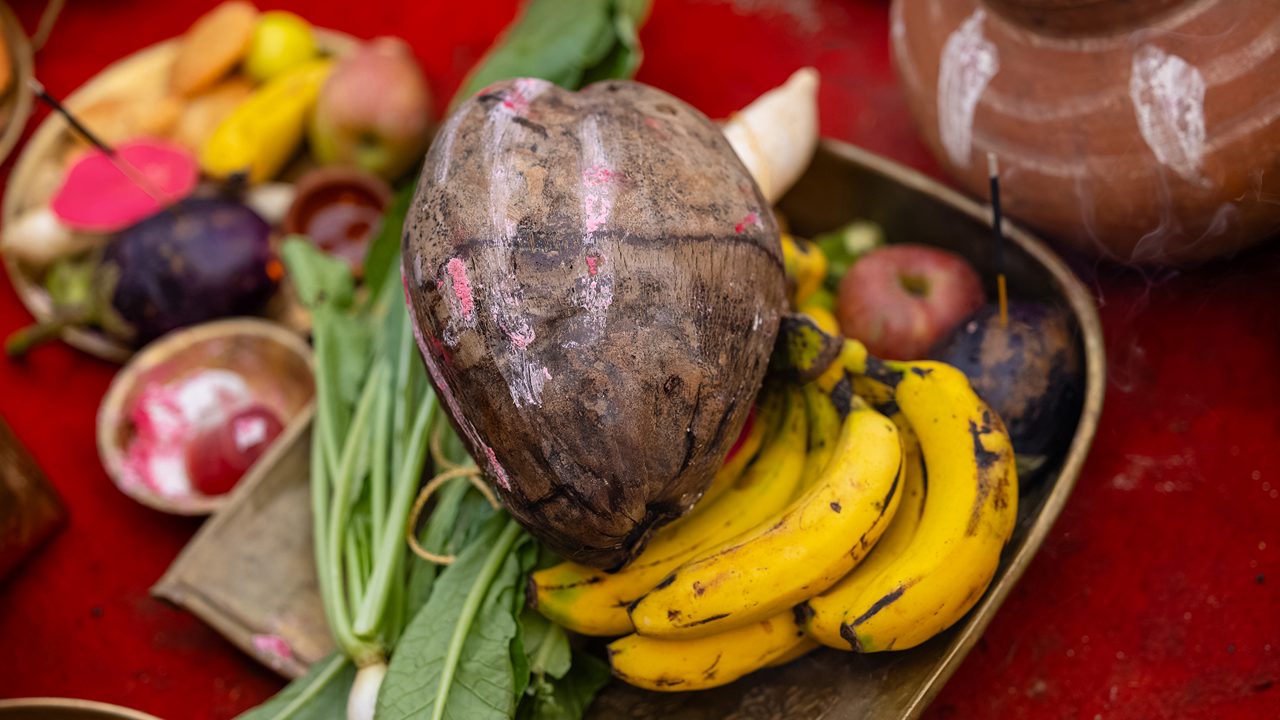Share this Article
Introduction: The Monsoon, the Month of Shravan, and the Mystical Heart of Nepal
Saune Sankranti marks the beginning of the sacred month of Shravan, a period that blends monsoon rains, agricultural rhythms, and ancient spiritual beliefs into one of Nepal’s most quietly powerful traditions. While festivals like Dashain, Tihar, Holi, and Teej dominate the national spotlight, Saune Sankranti remains a quieter, subtler, yet deeply spiritual celebration practiced in corners of rural Nepal, in households guided by ancestral rituals, and in communities still connected to the rhythms of earth and water. Known as the gateway into “Shrawan Maas,” this day is believed to awaken divine energies, particularly those associated with Shiva, nature, and the serpent gods known as “Naag.” The monsoon rains pour heavily across Nepal during Shravan, filling rivers, nourishing fields, and restoring the land after the scorching summer months. In the shadow of these rains, Saune Sankranti emerges as a symbolic cleansing point—a transition from the heat and dryness of the past months to a period of fertility, growth, and spiritual rejuvenation. Across Nepal, people refer to this month as the month of “Hariyo Saune,” where green leaves, new grass, and freshly sprouted rice paddies transform the landscape into living art. It is a time when nature breathes deeply, and the rituals of Saune Sankranti honor this renewal with reverence and devotion.
Origins of Saune Sankranti: Where Mythology and Rural Life Meet
The origins of Saune Sankranti reach far back into the pre-Vedic traditions of serpent worship and nature veneration, practices that Nepal’s indigenous communities have maintained for thousands of years. Long before the concept of mainstream Hindu festivals took shape, early societies believed that water, snakes, forests, and rainfall were divine forces that needed to be respected and appeased for survival. Snakes were never seen merely as creatures of fear; instead, they symbolized fertility, protection, and the guardianship of water sources. In Nepali folklore, Naags are described as rulers of underground water realms, keepers of ponds and rivers, and powerful beings capable of blessing or cursing lands depending on how they are treated. Shravan, the month of heavy rainfall, naturally came to be associated with these serpent deities, for snakes emerge more visibly from the earth during monsoon floods. The rural communities of Nepal, especially in the mid-hills and Tarai region, crafted rituals around these appearances, offering milk, flowers, and prayers to ensure harmony between humans, nature, and unseen energies. Over time, as Hinduism spread across South Asia, the worship of Lord Shiva merged seamlessly with these indigenous traditions. Shiva, known for wearing snakes as ornaments, became the central deity of Shravan. This blend of belief systems created Saune Sankranti—a day that marks the union of rain, nature, serpent worship, and devotion to Shiva, celebrated in ways that vary across Nepal yet share a common essence.
The Sacred Symbolism of the Month of Shrawan
Shravan is considered one of the most auspicious months in the Hindu lunar calendar, and Saune Sankranti marks its beginning. In Nepal, this month is believed to hold heightened spiritual sensitivity, making it ideal for prayers, cleansing rituals, and reconnecting with ancestral energies. The monsoon rains bring abundance to the fields, turning the rice paddies into shimmering mirrors of green and blue. Farmers refer to Shravan as the heart of “ropai ko bela,” the rice-planting season, when the fate of the yearly harvest becomes clear. Women often say, “Saune maas le jamma banaunchha,” meaning Shravan is a month that builds prosperity. The color green dominates this period, symbolizing hope, fertility, and the renewal of life. Women wear green bangles known as “hariyo chura,” green glass beads called “pote,” and green dupattas, signifying growth in both nature and relationships. The belief that the universe becomes more spiritually charged in Shravan also encourages devotees to fast on Mondays, known as “Saune Somvar,” in honor of Shiva. These layers of symbolism—green, rain, serpents, and Shiva—intertwine to make Saune Sankranti much more than a date on the calendar; it is a moment that opens the door to an entire month of spiritual magnetism.
Naag Worship: Understanding the Serpent Deities of Nepal
One of the most distinct aspects of Saune Sankranti is the ritual worship of Naags, the serpent gods deeply embedded in Nepali cosmology. In most Nepali households, snakes are not merely reptiles but divine beings that protect homes, maintain fertility in the soil, and regulate natural water systems. The belief in serpent deities is visible in countless sacred sites across Nepal. From Naag Pokhari in Kathmandu to the serpent shrines in Lalitpur, Terhathum, Bhojpur, Jhapa, Kailali, and Dang, nearly every district has a Naag-related shrine or pond. These shrines are often quiet, shaded by large peepal or bar-pipal trees, and surrounded by stone carvings depicting coiled serpents with raised hoods. The worship practices vary, but they typically involve offering milk, dubo grass, rice, incense, and flowers. Villagers often tell ancestral stories of Naag wrath—stories of floods caused when humans polluted ponds or destroyed serpent homes. Conversely, blessings such as rain, protection from drought, or the birth of children are attributed to the benevolence of satisfied Naags. Ritual specialists, known as “Naag pujari,” may perform chants unique to their region. These chants ask for the protection of livestock, farms, water sources, and children. On Saune Sankranti, families believe that offering purity and devotion to Naags ensures harmony for the entire year.
The Power of Water: Sacred, Practical, and Mystical
Water is at the heart of Saune Sankranti. The monsoon rains are not just a seasonal phenomenon; they are a symbol of life and cleansing. In Nepali culture, water—referred to as “pani”—holds both practical and spiritual power. It is believed to cleanse sins, refresh nature, and act as a doorway through which divine energies flow. Many stories in Nepali oral tradition describe water as a living entity with its moods, blessings, and warnings. Mothers tell their children, “Pani ko khel hudaina,” meaning one should never disrespect water. On Saune Sankranti, people visit rivers, streams, and natural springs early in the morning to bathe. This ritual bath is called “snaan,” symbolizing purification of the body and mind. After bathing, individuals offer prayers to water deities, asking for protection from floods and diseases during the monsoon season. In many rural areas, people clean their wells, canals, and household water pots, believing that a purified water source brings prosperity. The mysticism around water extends to its connection with Naags, who are believed to live within water bodies. This belief creates a unique blend of ecological care and spiritual ritual—keeping water sources clean is not only practical but sacred.
Rituals and Traditions: How Saune Sankranti Is Celebrated Across Nepal
The celebration of Saune Sankranti differs across Nepal’s ethnic groups, yet the essence remains the same: honoring nature, invoking divine protection, and purifying the mind. In the hills, families gather before sunrise to prepare offerings of fruits, curd (dahi), rice pudding (kheer), and dubo grass. Devotees bathe with water infused with sacred leaves like tulsi and neem, believing these herbs remove negative energies. In the Tarai, where the presence of snakes is more visible, people offer milk and turmeric near the edges of rice fields, canals, or bamboo groves where snakes are believed to dwell. Some communities in eastern Nepal, particularly among Kirati families, combine Saune Sankranti with ancestral rituals called “Kul Puja,” where they honor lineage deities alongside nature spirits. In western Nepal, particularly in the districts of Achham, Bajhang, and Doti, Saune Sankranti acts as the beginning of local agricultural festivities. Farmers pray for protection from pests, good rainfall, and the successful growth of transplanted rice. In Kathmandu Valley, people visit Shiva temples like Pashupatinath, Gokarneshwor, and Kageshwori. The name Kageshwori itself hints at ancient serpent rituals, as the temple lies near sacred ponds believed to house Naag spirits. These diverse traditions illustrate how deeply Saune Sankranti is woven into the cultural and ecological life of Nepal.
Lord Shiva and Shravan: The Devotional Heart of the Festival
While serpent worship remains central, Saune Sankranti also marks the beginning of a period deeply associated with Lord Shiva. The month of Shravan is considered the most auspicious time to worship Shiva because it is believed that he drank the poison “halahal” during the Samudra Manthan (churning of the cosmic ocean) on this month. Women and men across Nepal observe “Saune Somvar Brata,” fasting every Monday in Shravan to please Shiva. These fasts are believed to bring good health, strong marriages, prosperity, and peace. Devotees visit Shiva temples carrying pots of holy water to pour on the Shiva lingam. This ritual, known as “Abhishek,” represents the cooling of Shiva’s cosmic body after consuming poison. Saune Sankranti initiates these devotional practices. On this day, people vow to stay away from impurity, violence, anger, and dishonesty throughout the month. Women wear green bangles and apply mehendi as symbols of blessings and marital harmony. Many refer to this month as “Haritalika ko bela,” associated with feminine purity and devotion. The chanting of “Om Namah Shivaya” fills temple courtyards, and the ringing of bells (ghanti) echoes through the air, blending with the rhythmic sound of monsoon rain on temple roofs.
Regional Variations: How Different Districts Interpret Saune Sankranti
The beauty of Saune Sankranti lies in its diversity. In Kathmandu Valley, the festival has become subtle and urbanized, yet remnants of ancient traditions survive in shrines and ponds. In the mid-hill districts like Lamjung, Tanahun, Kaski, and Gorkha, communities organize small gatherings where families cook special foods like kheer, gundruk ko jhol, and seasonal fruits such as makai and nimki. In eastern Nepal, particularly in Ilam, Jhapa, and Panchthar, Saune Sankranti merges with local monsoon celebrations tied to the tea-farming cycle. Tea farmers pray for healthy leaves, abundant rainfall, and protection from fungal diseases that often spread during wet months. Meanwhile in the far west, the festival is more vibrantly preserved. In Bajura and Darchula, people call this day “Narayan Parwa,” where devotees visit Vishnu temples situated near rivers. In the Tarai districts like Saptari, Siraha, Sarlahi, and Rupandehi, the celebration becomes intertwined with Madhesi traditions. People decorate their courtyards with rangoli made from colored clay, and women gather in groups to sing monsoon folk songs known as “Saune geet,” which reflect love, longing, and devotion to the elements.
Food Culture of Saune Sankranti: Seasonal Rituals, Taste, and Symbolism
Food plays a central role in Saune Sankranti because it reflects Nepal’s agricultural harmony with the monsoon season. One of the most iconic foods of this day is “karkalo ko saag,” made from taro leaves, which grow abundantly along the edges of fields during the monsoon. People say eating taro leaves on Saune Sankranti brings strength and immunity for the year. Rice pudding, or “kheer,” symbolizes purity and is often offered to deities before being consumed by family members. Fruits like mango, jackfruit, banana, papaya, and bamboo shoots become central to the feast. In many villages, people cook “kodo ko roti,” millet bread that symbolizes rural Nepali identity. The emphasis on natural, green, and seasonal foods reflects the philosophy of the month: staying close to nature, embracing purity, and consuming foods that strengthen the body during a season known for colds and waterborne diseases.
The Ecological Significance of Saune Sankranti: Protecting Water and Nature
One of the most overlooked aspects of Saune Sankranti is its environmental relevance. The festival teaches ecological ethics through rituals that encourage the protection of ponds, rivers, and forests. In rural Nepal, people clean their wells, canals, and water taps on this day, believing it purifies both physical and spiritual surroundings. Many elders say that Saune Sankranti is the time when “pani ko satwo badhcha,” meaning water becomes spiritually energized. The worship of snakes also symbolizes respect for biodiversity. Snakes naturally control rodent populations and maintain ecological balance in rice fields. By honoring Naags, communities indirectly protect the environment. This ancient wisdom emerges strongly during Saune Sankranti: to respect water, animals, plants, and unseen natural forces.
Modern Reality: The Festival’s Disappearance from Urban Memory
Despite its deep cultural roots, Saune Sankranti is slowly fading from urban consciousness. Today’s youth, especially in cities, often know little about the festival beyond its connection to green bangles and Shiva Mondays. The ritual baths, serpent worship, and ecological traditions are less practiced in urban homes. However, in rural communities, the festival continues to thrive—not as a grand celebration, but as a lifestyle ritual woven into daily life. Yet modernization poses challenges. Traditional ponds where Naags were worshipped are drying up or being replaced by concrete structures. Fields where people once offered milk to snakes are becoming construction sites. As these landscapes change, the rituals tied to them slowly disappear.
Conclusion: Why Saune Sankranti Must Be Remembered
Saune Sankranti is more than a festival; it is a reminder of Nepal’s relationship with nature, water, and ancient wisdom. It is a bridge between the mystical and the practical, the divine and the earthly. Through serpent worship, people honored biodiversity. Through water rituals, they emphasized purity and environmental care. Through Shiva devotion, they embraced inner discipline and spiritual strength. In today’s fast-changing world, this forgotten festival offers valuable lessons on sustainability, cultural identity, and the importance of respecting the natural world. Saune Sankranti teaches us that festivals are not just events—they are philosophies, traditions, and memories that connect generations.
Categories:
Culture & Traditions
Tags:
#SauneSankranti
,
ShrawanMaas
,
PaniKoMahato


